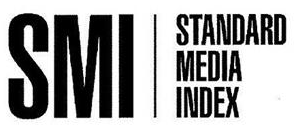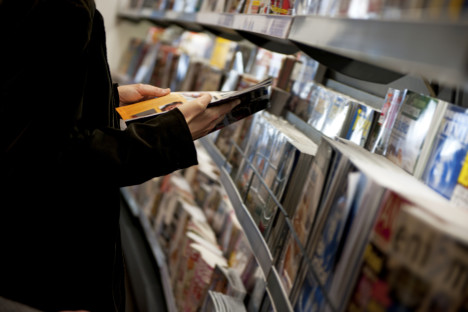2016 was worst year yet for print industry, new SMI numbers reveal
Australia’s print sector had another grim year in 2016, new data has confirmed.
Standard Media Index – seen as Australia’s most reliable barometer of advertising spending – today released its numbers to the market for the full calendar year. The numbers indicate that consumer magazine advertising revenues fell by 18% compared to 2015.
Meanwhile, newspapers were almost as badly hit, with metropolitan titles down 14%, regional titles down 5% and community titles down 8%. Revenues for magazines inserted into newspapers were also down 18%.
And there was little indication of a corresponding growth in digital revenues as print advertising continues to decline – within the digital sector, advertising revenue for content sites only grew by 0.4% according to the SMI numbers.
The numbers are compiled by SMI based on the spending of the major media agency groups, with the exception of IPG Mediabrands, which buy advertising on behalf of Australia’s big advertisers.
The numbers do not take account of direct advertising booking, or other revenues such as subscriptions.
Although they have a different methodology, the SMI numbers for the growth of outdoor are similar to those released by the Outdoor Media Association earlier today which showed a 15.7% growth for the sector. The SMI numbers showed a 16% growth in revenue for posters and billboards.
The outdoor sector (around $820m) is now bigger than newspapers (about $450m) and magazines ($170m) combined.
However, television remains the behemoth of the media industry, with agency revenues topping $3bn. This was despite a 4% fall in both metro and regional television and a smaller 2% fall in subscription TV’s advertising revenues.
The fastest growing area appeared to be digital advertising exchanges which grew by 100%, while ad networks fell by 5%.
Online video advertising grew by 11% to just over $100m.
As a sector, digital grew by 14%.
Radio also had a solid year, with 7% growth in metro radio and 4% growth in regional, with the sector being worth a total of around $580m, taking it past newspapers in relative size.
Overall, media spend increased by 1% to $7.1bn, according to the SMI data – the fifth consecutive calendar year of market growth.
Meanwhile, across the advertising categories, SMI’s data shows Government spending did the most to buoy the market with a growth in spend of $80.9 million due to the Federal Election and Census-related advertising.
Meanwhile, the Health Care category reported the highest growth, up 68%.
SMI’s MD Jane Schulze said: “`Australia’s media remains one of the most innovative in the world, with our media companies continuing to find new and improved ways for advertisers and their agencies to reach audiences.
“As a result we’ve seen key product categories such as Automotive Brands, Retail, Food/Produce/Dairy and Travel all increase their marketing budgets in the past year and most of those have also grown their advertising spend in December.’’
Meanwhile, the SMI numbers suggest that Seven West Media now brings in more than Nine Entertainment Co in TV advertising revenues, although both went backwards and Ten was the only one of the big three to increase its revenues during the year.
Google was the biggest digital player in terms of media agency spend growing by 13%, while Facebook’s slice of media agency action grew by 17%.
Twitter slid badly, with agency spend dropping 22% from $10m to $7.8m. LinkedIn grew by 8.4% to $12.6m.
Spotify saw explosive growth, more than doubling revenues to $11.9m. Rival Pandora was flat on $6.2m
Fairfax saw its digital spend fall by 11%, ad revenue for its newspapers also fall by 11% and spend on its newspaper-inserted magazines fall by 18%.
News Corp increased its digital ad revenues by 15%, but its newspaper revenues fell by 15% and its magazine revenues dropped by 16%.
Amongst the UK players, The Guardian grew its local revenues to $6.7m, while the Daily Mail brought in just $3.7m.
Buzzfeed’s revenues remained just below $2m.
Bauer had an awful year, with magazine ad revenue down 20%. But Pacific Magazines was even worse, down 25%.
In outdoor, Ooh Media grew by 9%, APN Outdoor grew by 6%, Adshel by 12%, JC Decaux by 5% and QMS by 42%.
Schulze warned that in the final month of the year, several sectors went backwards, with newspapers’ decline rapidly accelerating- showing a drop of 24%, compared to December 2015.
The overall drop of 6.6% in December is likely to be mitigated though, once final numbers for digital are taken into account.






Revenue for mainstream Australian magazine titles will continue to fall as long as the industry remains scared to innovate in order to appeal to a smarter, younger demographic. It’s time to ditch the boomers. Something needs to be done about the outlets for said titles too. Again, retail needs to innovate and push independent titles to the fore. This is where the interest is now.
No Michael, the same level of fuckedness applies to each age group I’m afraid.
I’d like to see a comparison between publication (both “paper” and digital) revenues and what vendors spend on PR. From where I sit, that is where the $ are going.
I’m curious, can anyone please explain to me why print is seeing so much money pulled out of it by agencies? This seems to be accelerating, faster than readers moving away from the medium, and I am just wondering what the drivers are behind the shift in spend?
Dave, advertisers and agencies are not ahead of the audience exodus, they are just trying to catch up with it. The audience left before advertisers heard about it. Now it’s just rationalization with some better options available elsewhere to boot.
“Online video advertising grew by 11% to just over $100m.”
This is surely way way off??
If the audiences have left, then surely that adjustment has already been made to reflect the change in consumption. Looking at the 12 months to September M-F metro pubs (to avoid duped data – I don’t have the databases to run the complete report), there was a cumulative decline in circ of approx 7% and a drop in readership (Roy Morgan, to avoid the EMMA debate too) of around 4%. Yet the decline in spend in the medium was 14%.
The decline of print advertising is hardly news…and for years news media publishers have led all other traditional media in monetising their quality content online such that Digital revenues now represent more than 30% of total Agency spend to news media publishers (and that’s excluding programmatic spend so the level is likely to be even higher). Similarly, bookings to Online Magazines grew 41% from CY2015. And your view on the low growth in `Content Sites’ bookings disguises the 8.8% growth in bookings to websites in the News/Weather genre and the 18.5% growth in Business/Finance sites. But some genres, such as Technology sites, reported lower ad spend in CY2016. It’s a big, complex media world out there so please call for more context next time before rushing to publish a (very old) headline…
Hi “Video”,
That’s a good point. This refers to the “pure play video” line, and obviously it’s a much bigger category in conjunction with other forms of digital.
Cheers,
Tim – Mumbrella
Yes that figure is incorrect…they didn’t check it with us before publishing and clearly I didn’t provide it. Jane
Thanks for the additional context Jane – and will do.
Cheers,
Tim – Mumbrella
When Mumbrella launched, the news was very positive. A breath of fresh air and almost a counter-culture feel, in a sometimes negative media space.
Tim, what happened to the values of the good old days?!
My readership has increased and yet my advertising revenue has dropped so I concur with Dave.
Right about now I bet the magazines wish they could snuff out SMI the way they did the Audit Bureau last year!
Reporting such things in percentage growth/decline has no relativity or relevance without the actual raw number reference points.
This is like saying Blackberry sales increased 100% when in reality they went from 10k units to 20k units, compared to Nokia who had 25% increase in sales going from 100k to 125k… thats a 250% increase over Blackberry!
But thats all hypothetical… data and its sources can be sliced and diced any way FOR A SPECIFIC PURPOSE.. and is the point of segmentation and various personality and cognitive function tests.
The below results reflect consumer responses by top level media channel by retail category:
http://bit.ly/2eUOAci
Unfortunately, most marketing strategists and media buyers don’t realise that looking at all channels holistically for a multi-channel approach actually resembles “Last-Click Attribution” and in this case can be called “Last Channel Attribution”. Ever notice when you something you’ve always coveted, you start noticing more of it?
If anyone would like to discuss this further, please contact me via LinkedIn.